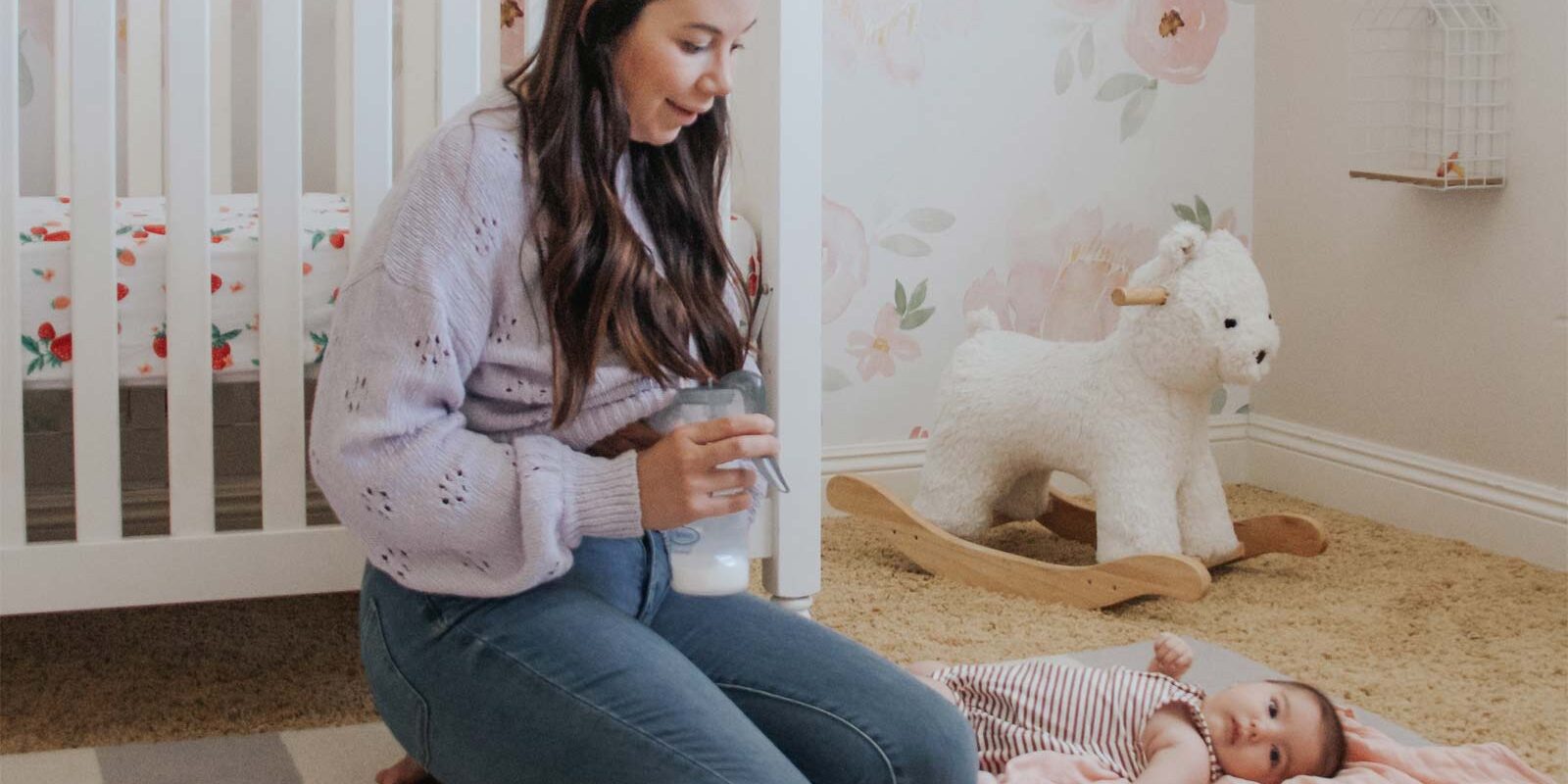If you’re breastfeeding your baby and want to start using a breast pump, how do you know when to start? Or how to do it? Or even why to do it? The options and reasons may seem endless, and they all depend on your unique journey.
First things first—most insurance companies will provide you with a free breast pump. The critical point here is to call and see what breast pump you qualify for BEFORE the baby arrives. Having all of your breast pump supplies ahead of time will be key so you can start pumping as soon as you need or want to, which may be sooner than you expect!
Here are some examples to help guide you on when and why you may want to include pumping into your breastfeeding routine.
When & Why to Start Using a Breast Pump
- Example A: If your baby is ever separated from you during your post-delivery hospital visit (for example, if baby has to go to the NICU or special care nursery) you would want to ask your nurse for a hospital-grade breast pump during your stay so you can get started pumping right away. This will give your body some stimulation to help your milk come in, even though your baby isn’t directly feeding from your breasts.
- Example B: Sometimes, infants struggle with latching, or require extra supplementation to help gain weight. If this happens, this is a good time to start using your breast pump. You will want to pump every time the baby gets a bottle to maintain your supply as if your baby were feeding directly from your breast.
- Example C: What if breastfeeding is going great, but you want your partner or a family member to feed the baby? Maybe your partner wants to learn and get comfortable with giving a bottle, or you want to build your “milk stash” before returning to work. The best time to give an exclusively breastfed baby a bottle for the first time is between 3 and 6 weeks old. This gives them time to master breastfeeding, but also a good window to start practicing with the bottle for when you are away from the baby or back at work.
Of course, these three examples can’t capture the myriad of reasons why lactating people use breast pumps. Some choose breast pumps right from the start, making that the exclusive method to feed their baby. Some have infants who latch well at first, but have trouble latching down the road. The critical point is that pumping is a legitimate option to feed babies, no matter when you start.
How to Get Started Pumping Breast Milk
First, always remember whenever a baby is getting a bottle, you should pump to replace that feeding to avoid a dip in your breast milk supply. Making milk is all about supply and demand. In general, the more you demand it from your body from either the pump or baby suckling, the more milk you make. So, do your best to match each bottle with a pumping session to maintain your supply.
If you are struggling with pumping, reach out to an internationally board-certified lactation consultant (like me!). We IBCLCs can assess your particular situation and can even set up a flange fitting to help ensure you are using the correct size flange on your breast pump to help optimize your breast milk output.
In my view, pumping and bottles go hand-in-hand during your breastfeeding journey. I always encourage what is best for you and your baby. The relationship a parent has with their IBCLC must be based on trust without judgement, even and especially in exclusively breastfeeding journeys. I highly recommend getting comfortable with an IBCLC to help guide you on how/why/when it may be best for you to start utilizing all the feeding tools available, such as which pumps and bottles they recommend. Telehealth and local resources have made finding and using these tools even more accessible.
From my experience in both the hospital setting and in private practice, my patients who were proactive in learning about breastfeeding while still pregnant were better able to achieve their feeding goals successfully. (I use the term “success” lightly, because this can be defined differently for every family’s feeding journey.) A breastfeeding journey with no challenges is more of an exception than the rule, so entering into it clear eyed and educated is the way to go. If and when challenges do arise, whether or not they involve breast pumps and bottles, an IBCLC is your single greatest asset.
About the author:
Leana L. Thompson, RN, BSN, IBCLC
Leana is a Registered Nurse, an International Board Certified Lactation Consultant, and a mom of two little girls under age 2. She lives in Gilbert, Arizona, where she owns her own business, LactationNow. She worked as a Mother-Baby RN for nearly a decade in hospitals all across the United States. Leana offers in-home and virtual lactation consultations. LactationNow’s goal is to provide services that give you and your partner the ultimate mother-baby experience before and after you leave the hospital. She covers prenatal breast consults, weaning consults, and everything in between. She also shares pumping and breastfeeding tips and tricks on her social media (@lactationnow) to support families across the globe. Contact Leana at Leana@lactationnow.com for virtual or in person IBCLC support.
